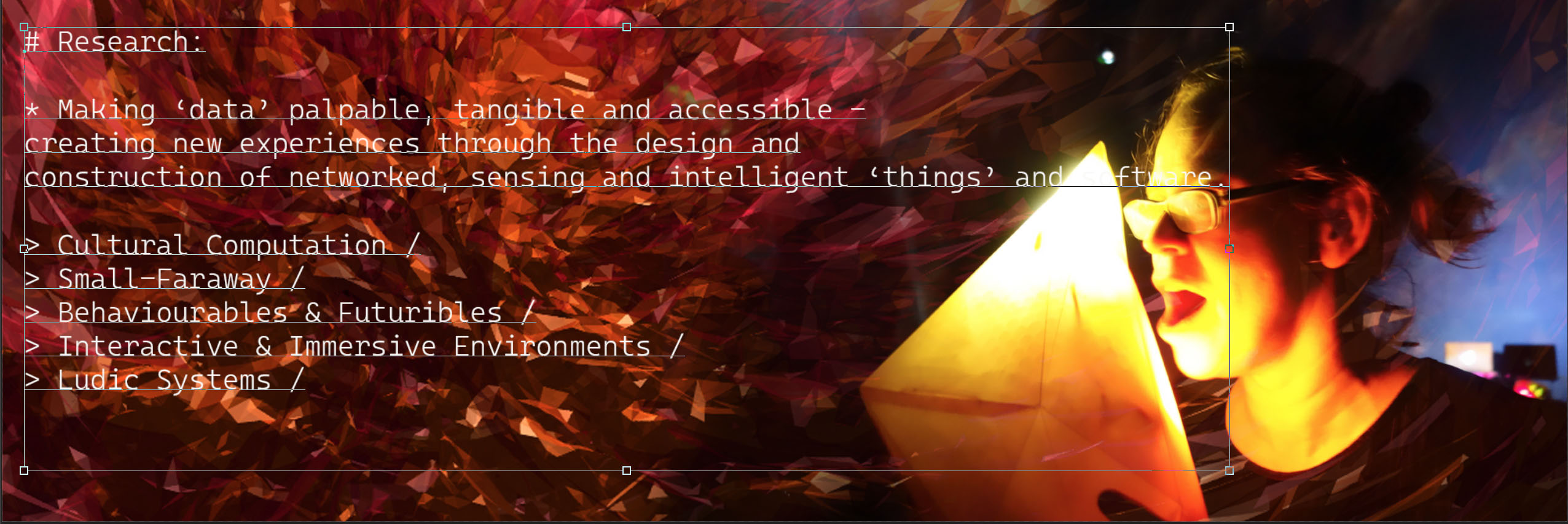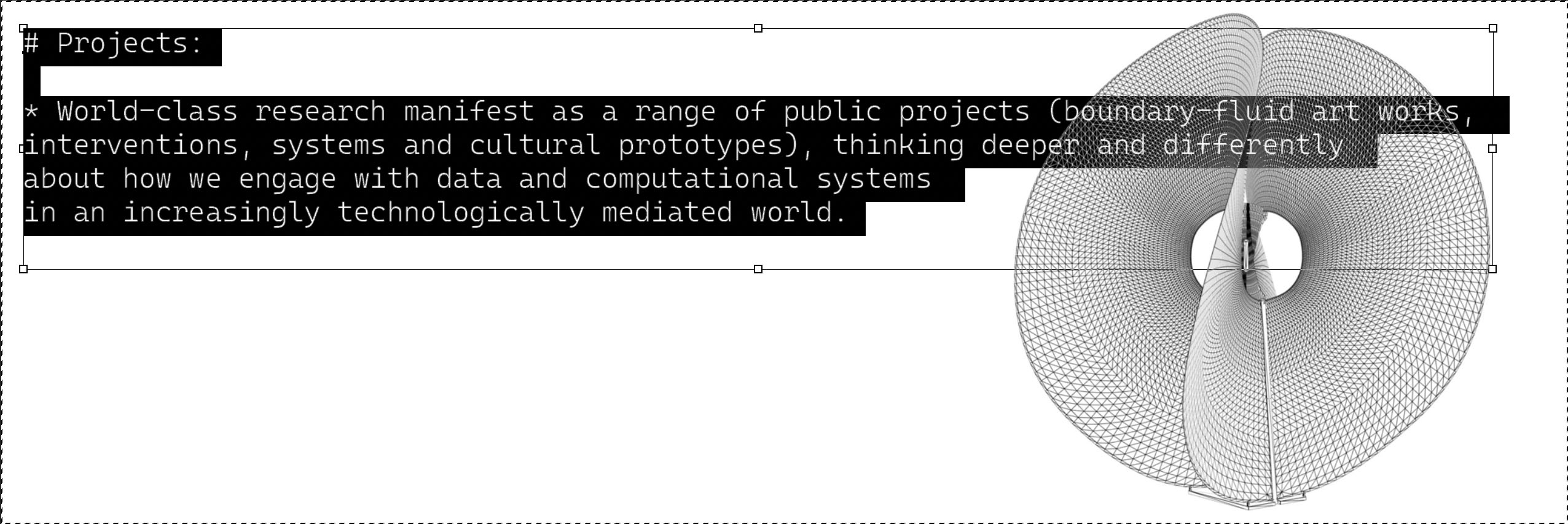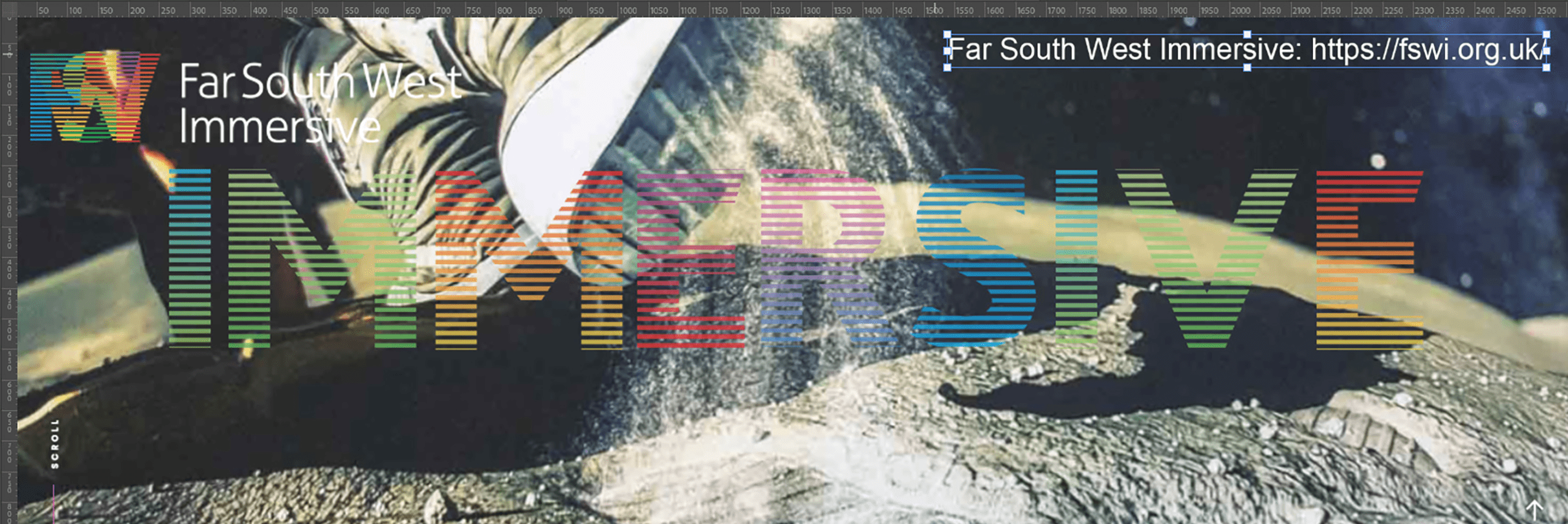
generative installation | sample video/audio output from real-time engine (32:9 aspect ratio for two screens)
custom software written in C++/OpenGL, digital video/audio source material
An Engine of Many Senses is a generative computational work exploring the history and potential future of the computer. It includes a series of media elements that combine and recombine over time — 3d images, 2d stills, generative audio, generative media “landscapes”, generative text and video components. The work has a series of internal rules that play out different combinatoric strategies, as drawn from an extensive database of architectural typologies and processes. In particular the work includes a series of allegorical time-based images of computers as well as collaged images from the history of the computer and computational history in general. It also includes diagrams of systems that have never been built. The text in the work is combinatoric and is displayed across a series of moving glyphs. The work is always different in that it never plays out the same media elements and/or processes. It is an example of computational creativity. The work is emergent in nature. It can be show on a series of high-definition screens, or via projections in architectural settings.
The allegorical computers include:
1) world – World Computer – Digital Philosophy for Fredkin/Wolfram
2) binary – Von Neumann Machine – for Turing and von Neumann
3) differential – Abstracted Differential Analyzer – for Vannevar Bush
4) dna – DNA Computer for Michael Conrad and Leonard Adleman
5) neural – Neural Network for Hava Siegelmann and Steven Smale
6) human – Human as Computer for Seaman and Ada Lovelace
7) light – Light Computer (Rössler/Seaman)
8) memex – Memex for Vannevar Bush
9) nano – Nano Computer for Eric Drexler
10) electrochemical – Electrochemical Computer for Gordon Pask
11) quantum – Quantum Computer for David Deutch and Stuart Hemeroff
12) replicant – Self-replicating Computer – for von Neumann
13) spin – Electron (Spin) computer for Rössler/Seaman
14) time – Time Computer (T-Computer) for Scott M.Hithcock
15) analogue – Analogue Computer / Maverick Machine for Gordon Pask
16) wave – Wave Computer/ Well Stirred – for O. E. Rössler and Hugh Everett the 3rd
The Engine of Engines – Toward a Computational Ecology
Bio:
Bill Seaman has explored text, image, sound and interface relationships through diverse technological means since 1979. In 1995, Seaman coined the term ‘Recombinant Poetics‘ to articulate a set of generative virtual worlds, inhabited and shaped by a flowing of images, video and poetic text and other “intelligently” distributed media objects. These flows enable the exploration of an advanced recombinance of these objects within a mutable context of neighboring media-elements, media-processes, physical environments and operative code functionalities. Each media-element can be said to convey its own field of meaning. Varying combinations of these fields are experienced through fleeting electronic/environmental relations. The mind-set of the participant represents another active field, and becomes dynamically involved in the construction of meaning. It is through the combination and recombination of these evocative digital fields of meaning, as experienced by an engaged participant, that a new form of poetics emerges. Seaman is currently a professor in Art, Art History & Visual Studies at Duke University where he is exploring Recombinant Poetics and Neosentience Research.
Credits:
Bill Seaman, Principle Investigator and Artist (concept and initial design).
Todd Berreth (programming and additional design).






You must be logged in to post a comment.